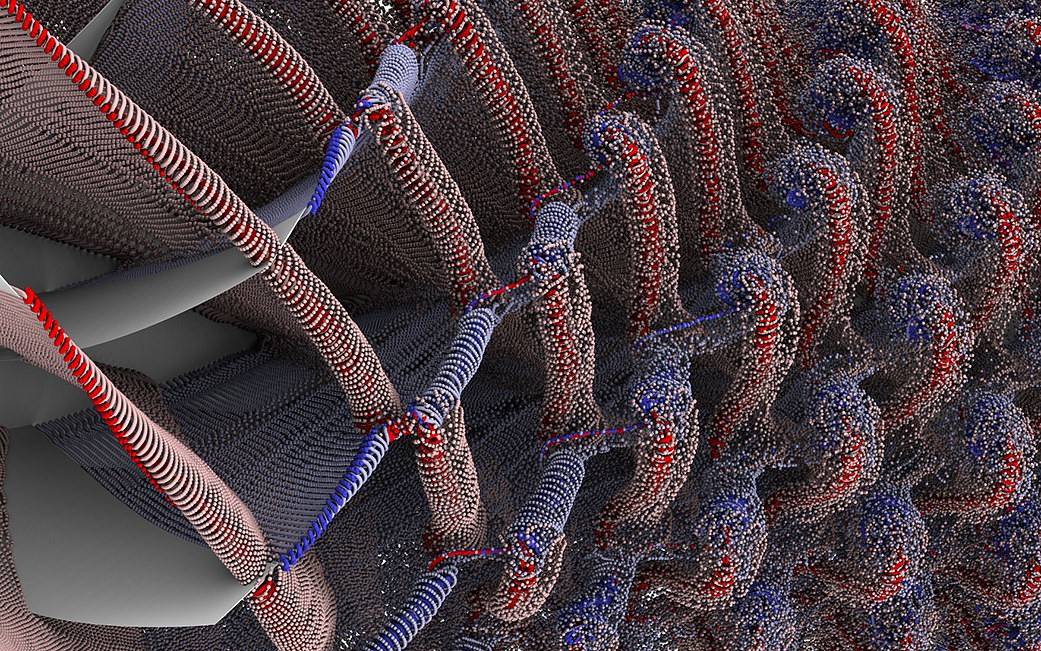
NASA and aviation industry partners are collaborating on the development of green aviation technologies. One concept studied at NASA’s Ames Research Center, in California’s Silicon Valley, is the contra-rotating open rotor propulsion system, which has two ultra-thin blades spinning in opposite directions on the same shaft, similar to the blades on a giant kitchen blender. These contra-rotating blades rotate around the outside of a turbofan jet engine, like that commonly used in modern airliners. This unique design allows air to flow more efficiently through the turbofan blades to improve flight performance, reduce carbon emissions and decrease blade rotation noise.
For the past year, researchers at the NASA Advanced Supercomputing (NAS) facility at Ames have produced first-of-a kind simulations of sound produced by air – aeroacoustics – to reliably predict noise sources for contra-rotating open rotors. This image was generated from a computer simulation of a contra-rotating, open-rotor design in which red particles are “released” on the upstream blades, blue on the aft blades. Solid colors are released on the blade tips, while faded colors are on the blade trailing edges. The basket-weave pattern shows where particles interact with each other — one of the sources of blade noise.
Using computational fluid dynamics methods and the Pleiades supercomputer, the NAS team verified the simulation accuracy and compared sound pressure level ranges with extensive wind tunnel test data from NASA’s Glenn Research Center and General Electric. Their simulations and results matched closely with the wind tunnel test results for sounds produced by the rotating blades.
The analysis requires a massive amount of computing power and time. Currently, the NAS team is researching ways to speed up the simulation and analysis process and cut down on computing resources needed to design planes that are more Earth-friendly.
More information and simulation video on the NAS website
Visualizer/Animator: Tim Sandstrom (CSC Government Solutions LLC), Ames Research CenterScientists: Michael F. Barad, Christoph Brehm (USRA), Jeffrey Housman, Cetin Kiris, Ames Research CenterWriter: Jill Dunbar (CSC Government Solutions LLC), Ames Research Center
Image credit: NASA Ames / Tim Sandstrom
Media contact: Kimberly Williams, Ames Research Center


























